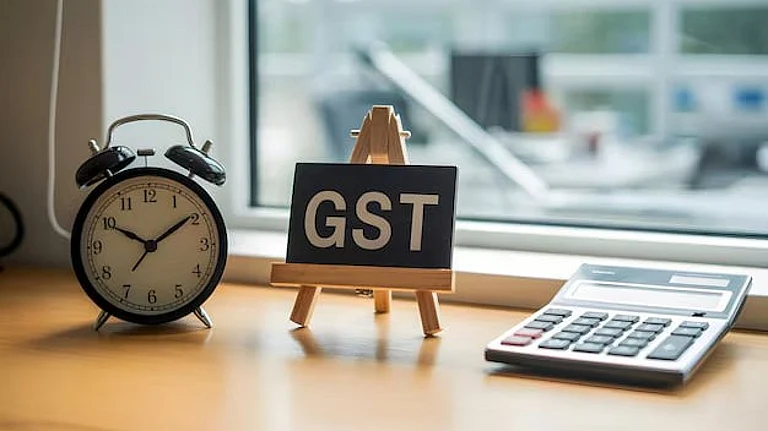Apple’s supplier Foxconn reportedly began the production of new iPhone 15 at its Tamil Nadu plant. As the California-based company looks to diversify its supply chain away from China, it has been increasing the production of its popular product in the country.
In the financial year 2022-23, Apple produced 7 per cent of its total iPhones in India. To put things in perspective, the number stood at 1 per cent in 2021 according to available data. According to experts, the biggest credit for this jump goes to the production-linked incentive scheme introduced by the Modi government in 2020. Under the scheme, companies receive incentive of 6 per cent on incremental sales of products manufactured in India.
While the PLI scheme has attracted attention of big players in the country and drastically reduced import dependency on finished smartphones, former RBI governor Raghuram Rajan’s recent interventions on the PLI scheme has raised questions that whether the success is of make in India or assemble in India.
Is There Value Addition?
In a paper that was published in May this year, Raghuram Rajan noted that in 2017-18, India imported phones amounting to $3.6 billion and exported just $334 million. However, the story has changed dramatically in the last five years as the country exported phones worth $11 billion in 2022-23 and imported phones amounting to $1.6 billion. The strong growth has boosted India's exports of electronic goods.

Rajan argued that the remarkable turnaround has been cited as evidence of India becoming a smartphone manufacturing giant. According to the former RBI governor, the claim is misleading.
In his paper, Rajan showed that in the period where mobile phones exports went up, the imports of parts used in the production of these goods increased substantially. The data cited by Rajan suggested that since the announcement of PLI scheme for smartphone manufacturers, the imports of semiconductors, PCBAs, displays, cameras, and batteries have seen a massive increase. This suggests that companies are mostly assembling their products in the country.
In a recent interview to The Wire, Rajan said that India is vying for the lowest part of value-added chain. He argued that for Rs 100 of the price of a phone, the assembly cost is just Rs 4 for iPhones. “If the government is paying Rs 6 for it and the cost is only Rs 4, why wouldn’t anybody bring assembly into India?” Rajan told The Wire.
Using the combined data on imports of parts used to manufacture phones and the exports of finished products, Rajan argued in his paper that India has become more import dependent following the implementation of PLI scheme. According to his calculations, the combined net exports fell from -$12.9 billion in FY17 to -$21.9 billion in FY23.

The data on broader manufacturing ecosystem also shows that there hasn’t been much progress in increasing the value addition to GDP. World Bank data showed that that the value added as % of GDP of manufacturing sector was the lowest in 10 years at the end of 2022.
A Gradual Process
While Rajan raised the question on the performance of PLI in adding value to the manufacturing ecosystem in the country, some argue that the process of bringing the entire manufacturing chain would be gradual.
In response to the question on PLI impact, CounterPoint Research said, "We have to understand that it's supposed to be a gradual process. Even China did not establish itself as a manufacturing hub in one day. The PLI scheme is a step in the right direction. First the assembly has to start and attract big players following which localisation of key components can pick up pace.”
A PWC India report noted that the Indian firms have made significant progress in some parts of the mobile phone value chain. The report stated that 16 per cent value addition happens in display, 13 per cent in sub-components, 12 per cent in IP licences, 10 per cent in processor, 8 per cent in casing, 6 per cent in memory, 5 per cent in storage, and 2 per cent in assembly.
PwC noted in its report, “India’s presence has grown from just 2 per cent (assembly) value addition in 2014 to about 15 per cent (assembly + sub-components) in 2022. It can grow its presence by another 8 per cent by localising manufacturing of casing of phones.” It added that in order to build more complex components, which have high share in value chain pie, India needs to build capacity to compete with other countries like South Korea, Japan, Taiwan and China.
Some experts cite the example of how China rose through the value chain of Apple’s iPhone production to point that India is on the right track. A paper by economist Yuqing Xing had analysed the progress China made in increasing its share in Apple’s value chain. Comparing the case of iPhone 3G in 2009 and iPhone X in 2019, the author found that China initially only assembled iPhones for the company and earned only 3.6 per cent of the bill. However, the gradual progress bore fruit for the country, and it earned 25 per cent of the total bill in 2019.
Xing wrote in his paper, “Chinese companies involved in the value chain of the iPhone have climbed to the upper rungs of the ladder. They performed relatively sophisticated technological tasks and captured 25 per cent of the value added according to the bill of materials, much higher than the 3.6 per cent gained from assembly of the first generation of the iPhone.”
Reacting to Rajan’s paper, Minister of State for Electronics Rajeev Chandrasekhar had said that the India is doing much better than China in its first 4-6 years of mobile manufacturing. “PLI scheme has created around 1,20,000 new direct jobs and nearly 2,50,000 new indirect jobs in 24 months,” the minister had said in response to Rajan's claims.
In the conclusion of his paper, Rajan has opined that even after the imposition of tariffs and PLI, the country has still not been able to manufacture simplest parts. Analytics firm CRISIL data suggested that the imports of essential parts used for manufacturing smartphones increased by 27 per cent in fiscal 2022. As the government looks to expand the scope of PLI scheme to IT hardware, the debate over whether it is actually adding value to India’s manufacturing ecosystem is expected to continue for time to come.































